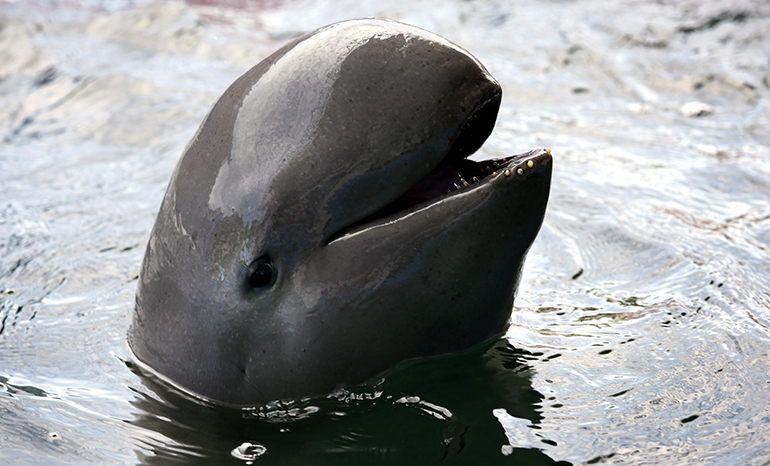The rare aquatic mammals have lost half their populations over the last half-century and human activity is said to be the main cause

The International Union for Conservation of Nature (IUCN) updated its red list of threatened species on Tuesday, announcing that due to the effects of human activity the irrawaddy dolphin and finless porpoise have had their listing changed from ‘vulnerable’ to ‘endangered’, meaning they are one rank closer to extinction.
The once abundant numbers of the two aquatic mammals that roamed the coastlines of Southeast Asia have been on a fast-paced downward spiral over the past 100 years, due mostly to loss of habitat and getting entangled in illegal fishing nets.
The re-evaluation of the listing for the irrawaddy dolphin and finless porpoise comes after the population numbers declined by half over the past 60 years and 45 years respectively, the new edition of the closely watched red list found.
“These species live in shallow waters near shore and both have populations confined to freshwater systems, and that makes them extremely vulnerable to human activities,” red list head Craig Hilton-Taylor told reporters on Tuesday. “In the Mekong river, for example, the majority of irrawaddy dolphin deaths in recent years have been caused by entanglement in gill nets. These nets hang like curtains of deaths across the river.”
In a statement issued last month, the World Wildlife Fund (WWF) announced that alongside being caught in fishing nets, the already vulnerable mammals are set to face yet another threat: hydropower dams.
“New proposed hydropower dams on the Mekong mainstream are also a concern to the future survival of the species,” WWF Cambodia director Seng Teak revealed.
The proposed Sambor Dam on the river in Kratie Province, Cambodia would fast-forward the extinction of the remaining dolphin populations, as large hydropower dams annihilate fish and dolphin habitats and block migration to reproduction grounds by producing changes in water flow.
Weeralong Laovetchprasit from the Marine and Coastal Resources Research and Development Center in Rayong Thailand told news organisation Khaosod that even without the expansion of new dams, the finless porpoise will surely become extinct due to an abundance of fishing nets and people littering in their waters.
“A lot of times they will get tangled in ropes and drown because they can’t come up to the surface to breathe,” he said. “Other times, they ingest so much plastic that their bodies are completely rotten when we do an autopsy.”
For Randall Reeves, chair of the IUCN, deliberate hunting or capture of the mammals is rare or due to the protected status of both species, but he went on to say that the current safeguarding from entanglement and loss of habitat is essentially useless.
‘Without practical solutions to this problem, the declines of dolphins and porpoises are bound to continue for the foreseeable future.’
Endangered species
The irrawaddy dolphin and finless porpoise are the closest they’ve ever been to extinction
The rare aquatic mammals have lost half their populations over the last half-century and human activity is said to be the main cause Irrawaddy dolphins found in South and Southeast Asia are coming under increasing threat. Illegal fishing and plans for more dams across the Mekong river are among some of the continuing threats to the vulnerable population Photo: Barbara Walton/EPA

